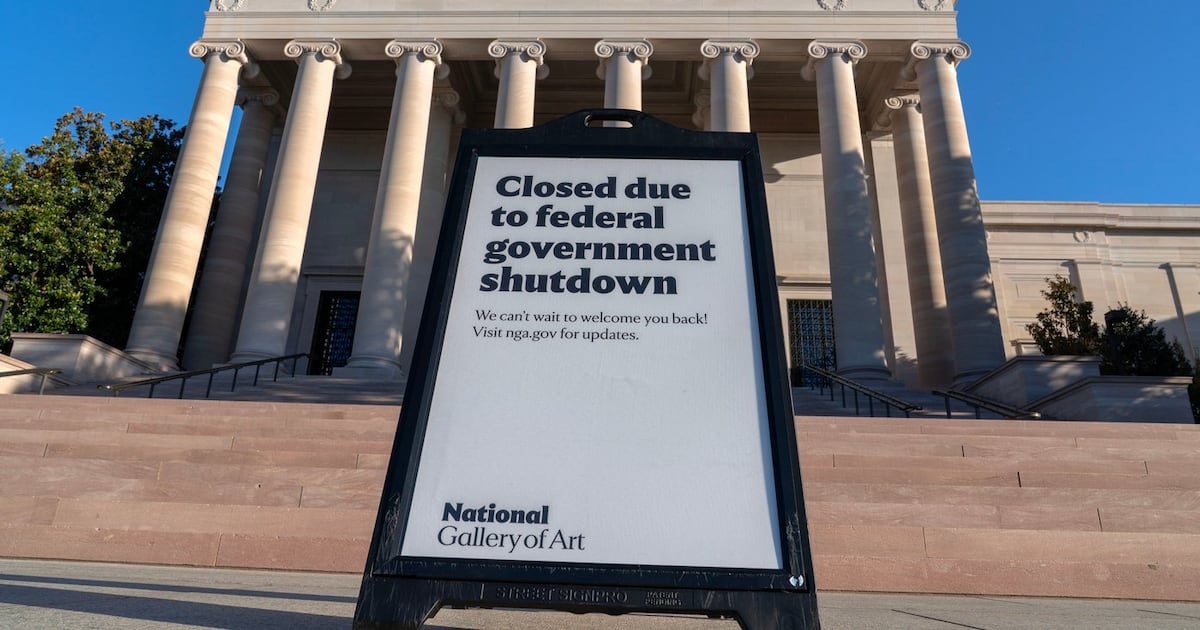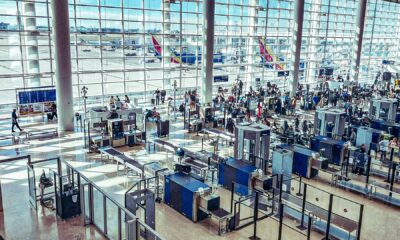Business
U.S. Government Shutdown Nears Record Length, Impacting Millions

The ongoing federal government shutdown in the United States is approaching the second longest on record, with some lawmakers predicting it could exceed the previous record of 35 days set during former President Donald Trump‘s first term. As the shutdown continues, it is not just the federal programs at risk; millions of workers and the broader economy are feeling the impact. The situation began on October 1, 2023, with no resolution in sight.
Worker and Economic Consequences
As of March 31, 2023, nearly 2.3 million civilian employees were on the federal payroll. According to the Congressional Budget Office (CBO), approximately 750,000 of these employees are expected to be furloughed each day during the shutdown. Furloughed workers do not report to work but will receive retroactive pay once the government reopens. Meanwhile, those deemed “excepted” continue working, providing essential services to protect life and property.
Active-duty military personnel, numbering 1.3 million, received a temporary reprieve from pay disruptions when President Trump directed the Pentagon to redirect funds. However, ongoing funding challenges may complicate future payments. The financial burden of paying furloughed employees is estimated at roughly $400 million per day, according to the CBO.
In addition to furloughs, the Trump administration has moved to reduce the federal workforce aggressively, targeting agencies that do not align with its priorities. This effort includes a reduction affecting 4,100 workers, primarily in the Departments of Treasury, Health and Human Services, Education, and Housing and Urban Development. White House budget chief Russ Vought indicated that the administration aims to cut more than 10,000 positions, though a federal judge has temporarily blocked these firings, citing concerns over political motivation.
Food banks across the country have ramped up efforts to assist federal workers who are struggling financially during the shutdown. The Capital Area Food Bank is expanding its services in the Washington region to provide additional support.
Economic Outlook and Business Impact
Historically, government shutdowns have had minimal long-term effects on the economy, generally resulting in a temporary slowdown in growth. An analysis from Oxford Economics suggests that a shutdown can reduce economic growth by 0.1 to 0.2 percentage points per week. Should the shutdown extend through an entire quarter, it could lead to a reduction in growth of 1.2 to 2.4 percentage points.
Some sectors experience greater impacts than others. The U.S. Travel Association estimates that the travel economy is losing approximately $1 billion weekly as visitors alter plans due to closed national parks and museums, including prominent sites like the Smithsonian Institution. Moreover, the Small Business Administration has paused new loan programs, affecting about 1,600 small businesses, with an estimated weekly loan value of $860 million.
The shutdown has also disrupted essential services such as the issuance and renewal of flood insurance policies, hampering mortgage closings and other real estate transactions. Additionally, the Federal Aviation Administration is facing air traffic controller shortages, resulting in flight delays across major cities including Boston, Philadelphia, and Dallas.
Political Dynamics and Public Perception
The political environment surrounding the shutdown is tense, with neither party willing to concede ground. Historically, parties that insist on conditions in funding bills have not achieved their objectives, as seen in past shutdowns in 2013 and 2018. Public sentiment appears divided regarding accountability for the impasse. According to a poll by the Associated Press-NORC Center for Public Affairs Research, about 60% of adults believe that Trump and congressional Republicans bear significant responsibility, while 54% attribute blame to congressional Democrats.
The ongoing shutdown has also seen the administration suspend approximately $18 billion in funding for critical infrastructure projects, including a new rail tunnel beneath the Hudson River and an extension of the Second Avenue subway in New York City. These projects are essential for the states that overwhelmingly supported Democratic candidates in the last election.
As the shutdown continues, the path to resolution remains unclear. Republican leaders insist that any negotiations regarding health care must occur only after the government fully reopens. Senate Majority Leader John Thune stated, “We’re not conducting negotiations in a hostage situation.” On the other side, House Democratic leader Hakeem Jeffries affirmed that Democrats will remain steadfast in their efforts to support American citizens during this crisis.
The repercussions of this shutdown will likely be felt for some time, affecting not only workers and businesses but the overall health of the economy. Both sides of the aisle must navigate these challenges carefully to reach a resolution that addresses the needs of all stakeholders involved.
-

 Politics4 weeks ago
Politics4 weeks agoSecwepemc First Nation Seeks Aboriginal Title Over Kamloops Area
-

 World5 months ago
World5 months agoScientists Unearth Ancient Antarctic Ice to Unlock Climate Secrets
-

 Entertainment5 months ago
Entertainment5 months agoTrump and McCormick to Announce $70 Billion Energy Investments
-

 Science5 months ago
Science5 months agoFour Astronauts Return to Earth After International Space Station Mission
-

 Lifestyle5 months ago
Lifestyle5 months agoTransLink Launches Food Truck Program to Boost Revenue in Vancouver
-

 Technology3 months ago
Technology3 months agoApple Notes Enhances Functionality with Markdown Support in macOS 26
-

 Lifestyle3 months ago
Lifestyle3 months agoManitoba’s Burger Champion Shines Again Amid Dining Innovations
-

 Top Stories2 months ago
Top Stories2 months agoUrgent Update: Fatal Crash on Highway 99 Claims Life of Pitt Meadows Man
-

 Politics4 months ago
Politics4 months agoUkrainian Tennis Star Elina Svitolina Faces Death Threats Online
-

 Sports5 months ago
Sports5 months agoSearch Underway for Missing Hunter Amid Hokkaido Bear Emergency
-

 Politics5 months ago
Politics5 months agoCarney Engages First Nations Leaders at Development Law Summit
-

 Technology5 months ago
Technology5 months agoFrosthaven Launches Early Access on July 31, 2025





















